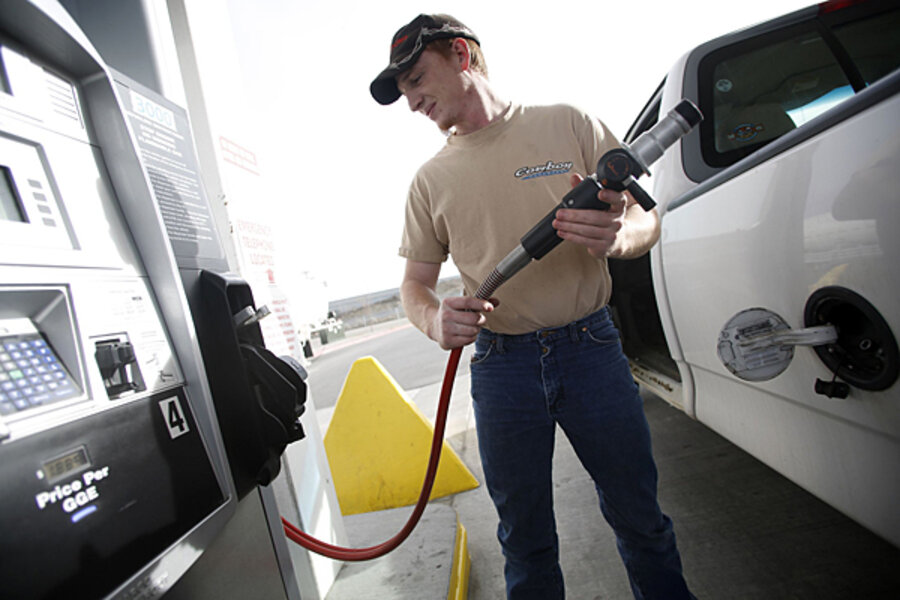The future of natural gas is the car?
Loading...
The natural gas revolution is getting some wheels – and just in time for the gas industry.
Rising use of natural gas in the transportation sector will offset a global slowdown in the growth of natural gas to produce electricity, according to a report released Thursday by the International Energy Agency. That timely boost will mean that America's boom in natural gas is likely to continue for several years, even if the focus begins to shift away from power plants and toward cars and trucks.
Not everyone is convinced natural gas will do for auto companies what it did for utilities. Changing fuels requires an overhaul of existing infrastructure, and natural gas comes with its own set of environmental concerns. In many regions, it is difficult for natural gas to compete with the range, power, and price of gasoline. But natural gas has already proven itself a useful alternative for fueling large vehicle fleets and it's even more attractive in parts of the world where gasoline prices are high.
“Gas is already a major fuel in power generation, but the next five years will also see it emerging as a significant transportation fuel, driven by abundant supplies as well as concerns about oil dependency and air pollution," IEA Executive Director Maria van der Hoeven said in a release. "Once the infrastructure barriers are tackled, natural gas has significant potential for clean-energy use in heavy-duty transport where electrification is not possible.”
Use of natural gas worldwide will grow by 2.4 percent a year through 2018, according to the report. That's down from last year's estimate of 2.7 percent a year due to weakening European demand and production interruptions in the Middle East and Africa.
Transportation use made up only 1.4 percent percent of global natural gas demand in 2012, according to IEA. It's projected to rise to 2.5 percent in 2018, still a small sliver of total demand. The growth is likely to come in Asian countries eager to reduce air pollution with cleaner-burning fuels.
"We are definitely seeing the cities carry the baton," Vance Wagner, co-lead of the China team at the International Council on Clean Transportation, told EnergyWire. "At the local level, this is being driven almost exclusively by the enormous pressure on local-level government officials to make rapid improvements on local air quality."
Natural gas powers roughly 14.8 million vehicles worldwide, according to the US Department of Energy. Many of those vehicles are buses, garbage trucks, and other fleet vehicles that log substantial miles but never drift too far from a central refueling point. Several major companies, including Shell and China's Kunlun Energy Co., have plans for massive natural gas filling station networks to promote use of the fuel in long-distance transport.
Those plans come as estimates of the world's natural gas reserves continue to increase. Hydraulic fracturing and horizontal drilling techniques have ignited a shale gas revolution over the past decade in the US, and many envision similar booms taking place in other shale-rich countries. Companies are eager to find new uses for the growing supply of cheap natural gas.
The extraction methods come with a cost, however. Methane, a potent greenhouse gas, can leak during drilling and transportation of natural gas. Fracking and horizontal drilling can pollute local air and water resources. Those technologies have improved, but some environmentalists say the reliance on natural gas only prolongs a transition to a carbon-free future.








